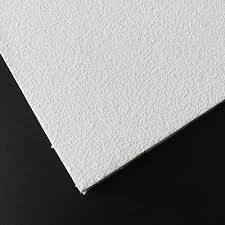- Afrikaans
- Albanian
- Amharic
- Arabic
- Armenian
- Azerbaijani
- Basque
- Belarusian
- Bengali
- Bosnian
- Bulgarian
- Catalan
- Cebuano
- Corsican
- Croatian
- Czech
- Danish
- Dutch
- English
- Esperanto
- Estonian
- French
- German
- Greek
- Hindi
- Indonesian
- irish
- Italian
- Japanese
- Korean
- Lao
- Malay
- Myanmar
- Norwegian
- Norwegian
- Polish
- Portuguese
- Romanian
- Russian
- Serbian
- Spanish
- Swedish
- Thai
- Turkish
- Ukrainian
- Uzbek
- Vietnamese
дек. . 05, 2024 15:10 Back to list
main t ceiling grid
Understanding Main T Ceiling Grids An Overview
Main T ceiling grids are a fundamental component of suspended ceiling systems, widely used in commercial and industrial buildings due to their versatility and ease of installation. This article delves into what main T ceiling grids are, their components, installation methods, advantages, and considerations for building design.
What is a Main T Ceiling Grid?
A main T ceiling grid is a system of metal supports that creates a framework on which ceiling tiles are laid. It typically consists of two main components the main T runners and the cross T runners. The main T runners are the primary support beams running the length of the room, while the cross T runners are perpendicular to the main T runners, forming a grid-like framework that holds the ceiling tiles in place.
Components of a Main T Ceiling Grid
The main components of a ceiling grid include
1. Main T Runners These are usually installed at 4-foot intervals and provide the main structural support.
2. Cross T Runners Installed perpendicular to the main T runners, these support the ceiling tiles across the width of the room.
3. Wall Angles These are L-shaped strips that are fixed to the perimeter walls of the room and provide a secure edge for the grid.
4. Ceiling Tiles These come in various materials, sizes, and finishes, allowing for diverse aesthetic options.
5. Hangers Metal rods that connect the main runners to the building structure, ensuring stability and weight support.
Installation Process
The installation of a main T ceiling grid requires careful planning and execution
1. Measuring and Marking Accurately measure the dimensions of the room and mark the desired ceiling height. Use a chalk line to outline where the wall angles will be placed.
2. Mounting Wall Angles Attach wall angles to the marked lines, ensuring they are level around the perimeter of the room.
3. Hanging Main T Runners Install hangers from the building’s structural framing to create a grid for the main T runners. Make sure they are evenly spaced and level.
4. Placing Cross T Runners Insert cross T runners into the slots on the main T runners at right angles, ensuring the grid is evenly spaced.
main t ceiling grid

Advantages of Main T Ceiling Grids
The use of main T ceiling grids comes with several advantages
1. Versatility Ceiling grids can accommodate various ceiling tiles, allowing for unique designs and finishes.
2. Access to Utilities The suspended ceiling allows easy access to plumbing, electrical systems, and HVAC ducts without significant reconstruction.
3. Acoustic Properties Many ceiling tiles are designed to absorb sound, making them ideal for spaces where noise reduction is essential.
4. Aesthetic Flexibility The variety of materials available for ceiling tiles means that designers can achieve almost any look, from traditional to modern.
5. Cost-Effective Generally more affordable than traditional drywall ceilings, ceiling grids can also be installed more quickly, reducing labor costs.
Considerations for Design
While main T ceiling grids offer numerous benefits, several considerations should be taken into account during the design phase
1. Weight of Ceiling Tiles Ensure that the grid system can support the weight of the chosen ceiling tiles, especially if they are heavier materials.
2. Room Height The installation of a suspended ceiling reduces the overall height of the room, which can impact the aesthetic and function.
3. Fire Code Regulations Compliance with local fire codes is crucial, as certain materials and systems are required based on building type and occupancy.
4. Maintenance Consider how often maintenance will be needed for the ceiling tiles and the potential need for replacement.
Conclusion
Main T ceiling grids present a practical solution for achieving functional and aesthetic ceiling designs in various environments. Their adaptability, ease of installation, and cost-effectiveness make them a popular choice among architects and builders. Understanding their components and advantages can help in making informed decisions for any construction or renovation project.
-
Transform Interiors with PVC Gypsum Ceiling: A Stylish, Durable, and Moisture-Resistant SolutionNewsMay.19,2025
-
The Smart Interior Upgrade: Discover the Durability and Versatility of Gypsum Ceiling Access Panel SolutionsNewsMay.19,2025
-
The Smart Choice for Interior Design: Discover the Value of PVC Gypsum Ceiling SolutionsNewsMay.19,2025
-
Mineral Fiber Ceiling Tiles: The Smart Blend of Performance and AestheticsNewsMay.19,2025
-
Mineral Fiber Ceiling Tiles: The Superior Choice Over Gypsum for Sound and Fire SafetyNewsMay.19,2025
-
Mineral Fiber Ceiling Tiles: Eco-Friendly Strength and Style for Every CeilingNewsMay.19,2025







